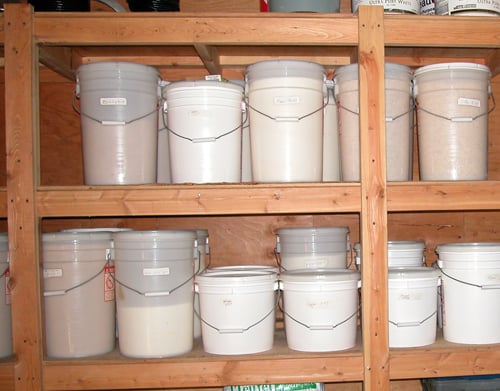Many of us have stored various amounts of grains and legumes, but do not rotate grains or legumes into our regular diet. So they sit somewhere until we need them or they go bad. Now suddenly introducing a large amount of grains into your diet can cause major disruptions in your intestines. So how do you bring these grains and legumes into your diet without causing problems?
According to one study, that I saw we eat the same main dishes about 80% of the time. This is because of taste, habit, familiarity, lack of imagination and maybe limitations on our cooking ability. You probably cook from a list of less than 20 main dishes, so take this list and see how you can introduce grains into your meals.
So created list about 10-20 dishes long and determine how you can add various grains or legumes to them. Start out by making small adjustments to recipes and add more as taste preference allows.
Here are some examples of how to rotate grains
- Meat loaf, add rice and/or wheat berries and/or dry beans.
- Stroganoff serve over rice or bulgur wheat.
- Chili, you can add wheat or rice.
- Tuna noodle casserole, how about adding a small amount of wheat.
- Stuffed green peppers, add rice or wheat.
- Shepherd’s pie, add some cooked dry beans.
- Chicken noodle soup, you can add rice or wheat.
- Pork fried rice, add a small amount of wheat.
- Chocolate chip cookies add oatmeal and wheat flour.
- Pancakes make mix using wheat flour or oatmeal.
- Vegetable soup add rice and wheat berries
- Fish and chops; serve bulgur wheat as a side dish.
To make it easy on your family
- Choose dishes your family likes.
- Avoid extreme changes keep the changes small. The less normal a dish is the greater the chance the dish will be rejected and considered undesirable.
- Introduce change slowly and it will be easier for your family to accept.
If you are careful, you can rotate grains and legumes in your food storage over time. Just don’t rush it at the beginning and if you ever have to live off it, your family will be glad their systems are already adapted to it.
Howard


[lasso rel="emergency-preparedness-more-a-manual-on-food-storage-and-survival-2nd-edition-revised-and-updated" id="35334"]